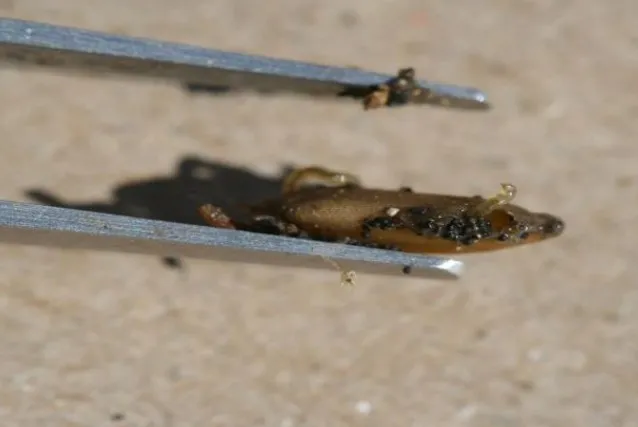The Usual Suspects
Time to round up the usual suspects! When talking about arthropod control in California, the usual suspects are rice seed midge, tadpole shrimp, and armyworms. I will focus on rice seed midge and tadpole shrimp in light of recent pyrethroid exceedances detected in the Sacramento Valley.
The challenge with both rice seed midge and tadpole shrimp is that they are a difficult pests to scout for and their injury can go undetected and can happen quickly. Unlike shrimp, midge does not muddy the water, so its presence can go unnoticed. Midge larvae construct small silken tubes that get covered in soil and are attached to the seed. These tubes are about the length of a seed and visible with the naked eye. In fields that take long to flood or where there is a delay in seeding, the tubes can be seen even before seeding. Midge larvae hide in the tubes and feed on the seed, hollowing it.
Usually, we suspect a field may have shrimp when the water is muddy (and there’s no wind). However, small shrimp won’t muddy water but can injure rice. Once you can see shrimp with the naked eye, they can cause damage. Shimp grow very fast and they can go from “invisible” to large in just a couple of days. Shrimp will feed on the shoots of the seed as it germinates; they will not hollow the seed like midge does.
Late planted fields, or seeding during periods of high temperature, increases the risk of damage by both pests. Seeding in fields that have been flooded for 4 days or longer also increases the risk.
Unfortunately, we do not have traditional thresholds for these pests. It is difficult to count midge or shrimp in the field. Instead, we rely on the number of healthy seedlings per square foot. Remember that at a seeding rate of 180 lbs/a you are broadcasting about 60 seeds per square foot. The optimum number of plants per square foot to maximize yields is 25, but rice is able to compensate as stand decreases. Many other factors will affect stand, so you want to be as close to the 25 as possible.
I use a small aquarium net to scoop seeds/seedlings and shrimp during windy days when the water is muddy. Inspect the seeds/seedlings and determine if they have been injured. If the number of seedlings per square foot is less than 25 and either midge or shrimp are present, an insecticide is needed. Rice is susceptible to both pests during the period of germination, but once the root is anchored in the soil and you have a well-developed spike, seedlings are less susceptible to damage. If you “leather” your field (drain very soon after seeding), then midge or shrimp won’t be an issue and no insecticide treatment will be needed.

Picture: Hollowing of seed caused by rice seed midge
